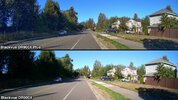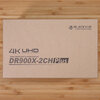reverend
Well-Known Member
- Joined
- Apr 22, 2014
- Messages
- 5,715
- Reaction score
- 4,105
- Country
- United Kingdom
- Dash Cam
- Too many
The front advantages seem to be delivered via the SoC upgrade only as it's the same image sensor used as the DR900x - the previous DR900 cameras were HiSilicon Hi3559 based and this new DR900x Plus is the newer HiSilicon Hi3559v200 SoC as used in the DR750x.
As mentioned the rear camera is the same as that in the DR750x with the Sony IMX327 sensor.
Details below for this latest DR900X Plus.
SoC: HiSilicon Hi3559v200
Front sensor: OmniVision OS08A10 - 1/1.8" sensor - 2.0µm pixel size
Rear sensor: Sony IMX327 - 1/2.8" sensor - 2.9µm pixel size
Not sure how bitrates compare across the two SoCs but shows that just changing the SoC still offers potential benefits to a solution.
As mentioned the rear camera is the same as that in the DR750x with the Sony IMX327 sensor.
Details below for this latest DR900X Plus.
SoC: HiSilicon Hi3559v200
Front sensor: OmniVision OS08A10 - 1/1.8" sensor - 2.0µm pixel size
Rear sensor: Sony IMX327 - 1/2.8" sensor - 2.9µm pixel size
Not sure how bitrates compare across the two SoCs but shows that just changing the SoC still offers potential benefits to a solution.
Last edited:



